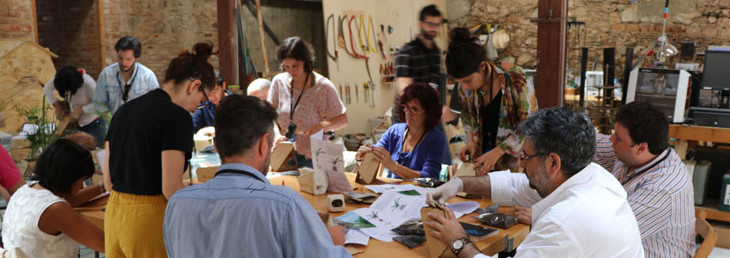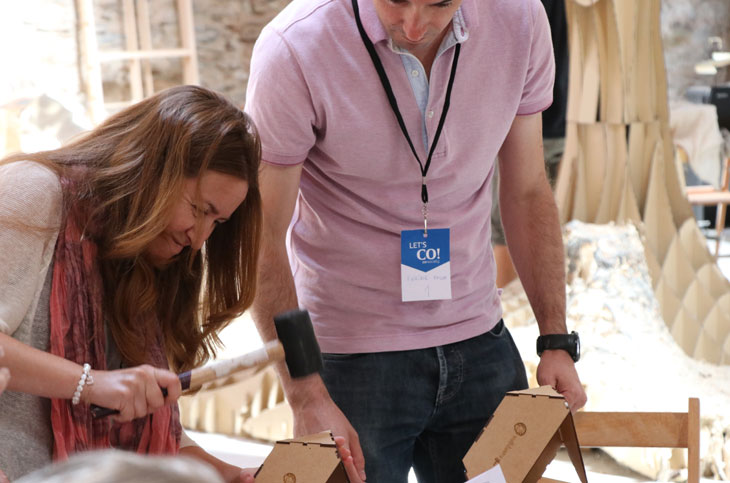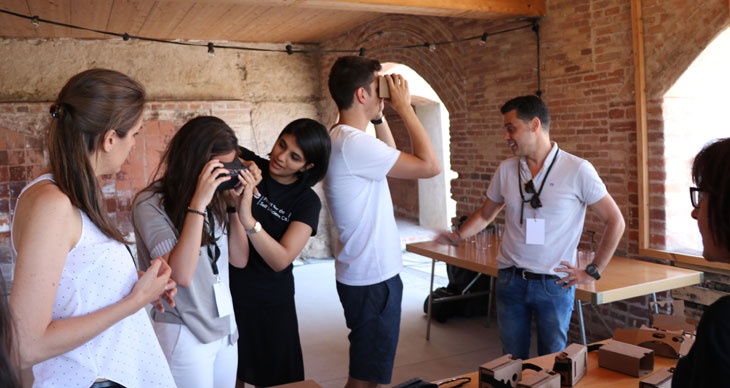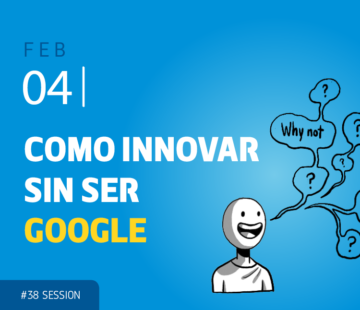Co-Session #26 on Self-sufficiency (II): hands-on workshops

We explored Self-sufficiency in our last Co-Session, learning not just by knowing about the new opportunities on the horizon for companies responding to the need of more sustainable production and consumption ways, but also by participating in different hands-on workshops on innovative approaches to energy generation, self-fabrication and virtual reality.
Energy
We knew that alternative energy sources are especially suited for achieving energetic self-sufficiency; about the sun’s rays caught by solar panels or breezes capable of moving the blades of a small windmill. However, many of us learned for the first time in this Co-Session that it is also possible to obtain energy from the soil where plants are being grown. We did it ourselves in a hands-on workshop where we built our own electricity-generating pot. This pot was also designed to be self-fabricated on site using adjustable pieces “cut out” with a laser cutter and a thin wooden board.
The functionality of this pot-battery is based on research from 2007 and referred to as Plant-e Technology, currently in the experimentation and improvement phase. During the photosynthesis process, plants use their root system to deposit up to 60% of the energy they produce into the soil. By applying the concept of biological cell combustion, it is possible to convert part of this energy into electricity via microbial action. The energy generated by this innovative discovery is still minimal, about 0.4 W/m2, but ongoing research indicates it could be up to four times higher in the future. Improvements to this technology would make it possible, for instance, for vertical gardens hanging on building facades to not only act as insulation but also as a self-sufficient source of energy.

Fabrication
GREEN FABLAB Valldaura is working on a project, together with the Park of Collserola where it is located, and the forestry services company Social Forest, experimenting with geolocalization to trace wood procurement from the origin, starting with the tree itself. Valldaura uses lumber cut from its own land to self-fabricate furniture designed and customized under the tag Open Source Furniture.
Today, every product starts out as a digital design. Furniture designed in open source can be freely used and modified. Self-fabrication doesn’t only mean that each product, in this case each piece of furniture, can be customized. We learned that self-fabrication also means that the logic of mass production changes and it shows us how cities can avoid being “product importers and waste exporters” and instead become more self-sufficient. Self-fabricated products also create a special bond with their producer/consumer. When an item you have created stops working, it is much simpler, and much more probable, that you will fix it, rather than buying a replacement. This also means that self-fabricated consumer items result in higher sustainability.

Augmented Reality
Self-sufficiency, the idea that you can build anything yourself, can also be applied to the most advanced technology, such as augmented reality and virtual reality. We were able to test this out at a workshop showing us a practical way to experiment with these technologies using a simple, DIY VR (virtual reality) visor made from cardboard or wood. Or even the relative ease with which you can use something like Unity, an open source software and platform, to design and share models of augmented and virtual reality.
We also learned that making available this type of technology and access to VR models for designers and all kinds of “makers” allows them to work on their designs and projects in a more sustainable way, conserving, for instance, CO2 from unnecessary trips or reducing building materials destined to prototypes, maps, models, trials, etc.
Co-Session #26 on Self-sufficiency